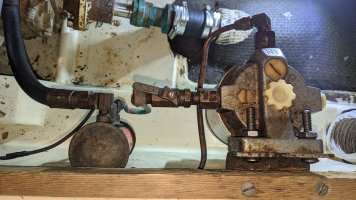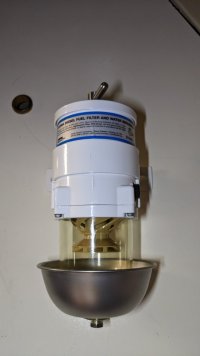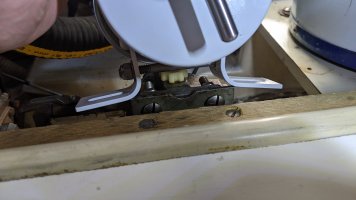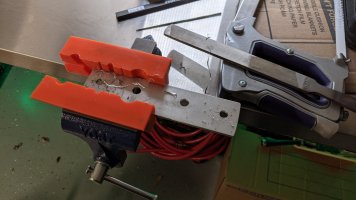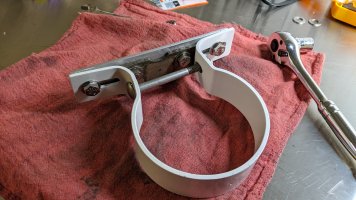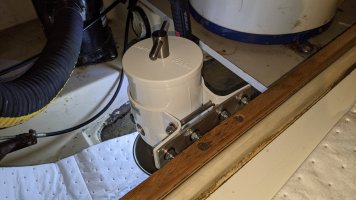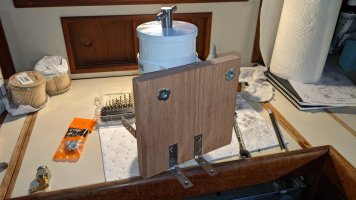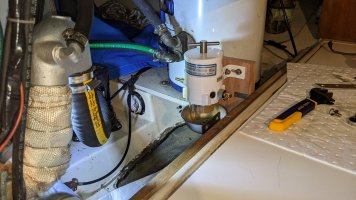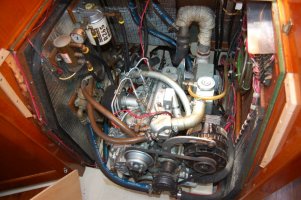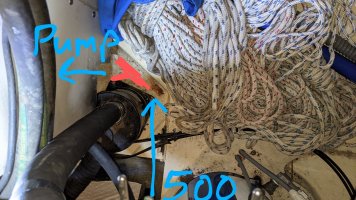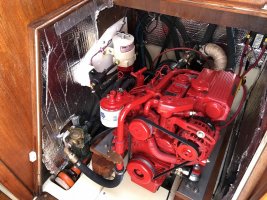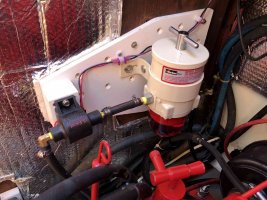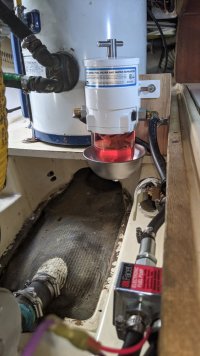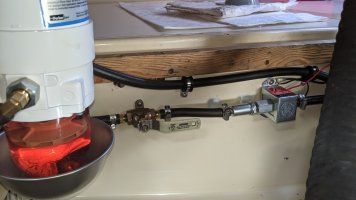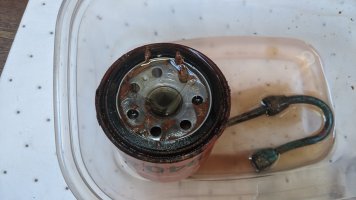I also upgraded from Fram to the 500 (bought slightly used on craigslist) and yes, had to get new hose fittings for the unit. Also built a bracket arm for it and installed it on stbd side with bracket attached to the garbage can box so easy to get to the filter top from laz.
Other notes from the experience:
1 - You need to get the 500 unit with the metal can under the sight glass to meet current ABYC standards. The metal can helps divert fire-heat from melting fuel bowl in theory.
2 - I replaced all the fuel lines in the boat with rubber fuel hose during the job. Some of the copper lines I took out had actual kinks in them which quickly formed cracks when I gently bent the tube back. yikes! glad they lasted until now but I would now consider old copper fuel lines a ticking time-bomb.
3 - I had to take the banjo bolt off the high pressure fuel pump to replace the fuel line to it. There is a crush washer under the banjo that I didn't now about and it had fallen out and wasn't there when I re-assembled leading to a little fuel leak. I found the washer lying on the pump and that fixed the leak, but crush-washers are usually a use-once-only thing so you might want to order one (or get it from your local Kubota dealer) before heading to the boat with new fuel hose.
4 - The little can lift pump thing is no whimp like I thought.. it can move a LOT of fuel, I was really surprised listening to the thing clicking really fast and watching the racor fill with fuel quickly. When in slowed down, but still clicked a lot more often than "normal" was what led me to discover the leak mentioned above.. click-frequency is a great cue.
5 - The 500 unit I got was on craigslist because the installer (prof. mechanic) found it couldn't keep up with the fuel flow of the engine it was used for and they needed a larger unit!!! Made me glad to have sails

. On the other hand, the mechanism these filters use to separate fuel and water (the "turbine") depends on a strong fuel flow to work which we are certainly not coming close to at the gallons-per-season rate we have vs. the gallons-per-minute rate they are designed for. That said, the water should separate just from gravity for us and changing the oversized filter is super easy and convenient and the sight glass is a nice feature, so no regrets.
6 - Between the slow leak I made and the spills from changing the secondary spin-on fuel filter at the back of the engine, and the spills from bleeding the fuel system to the pump I ended up with probably more then two cups of diesel fuel all over the engine on the stbd side. While I generally find "Simply Green" to be an OK but not really effective cleaner, that's what I had, and I poured it and sprayed it all over the engine and area, let it sit for a while, then washed off with a hose, then vacuumed up the residue (thanks Harbor Freight shop vac for giving your life to the cause!!!). It worked wonders and years of lingering diesel smell disappeared overnight. This was perhaps the highlight discovery of the whole fuel supply upgrade job.
